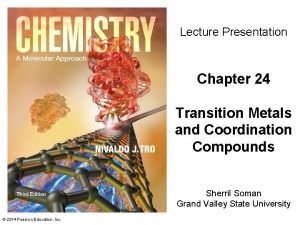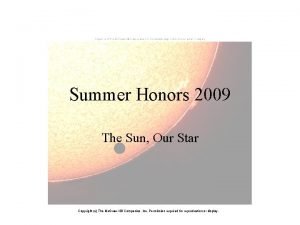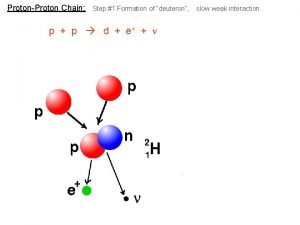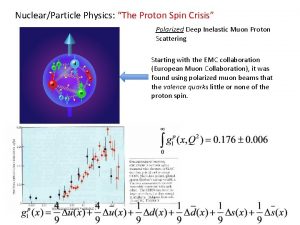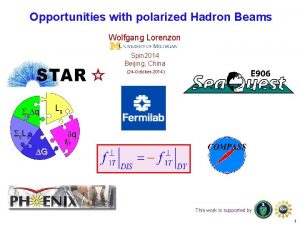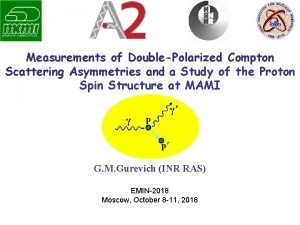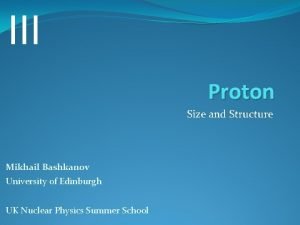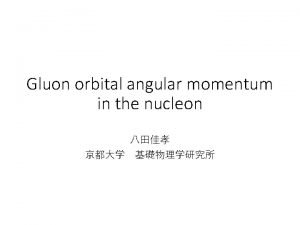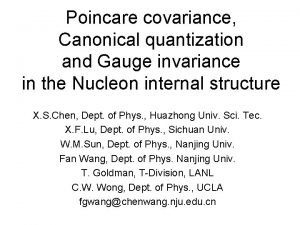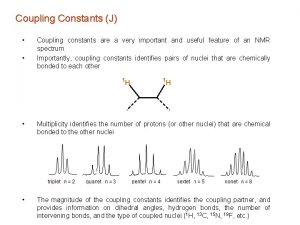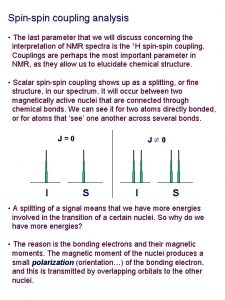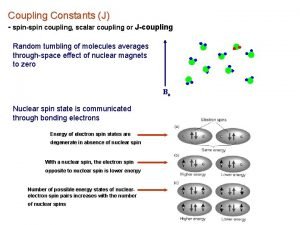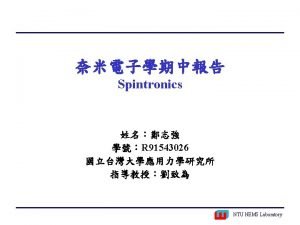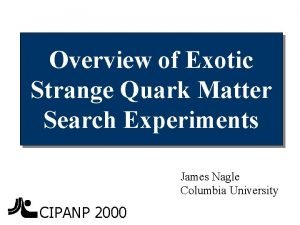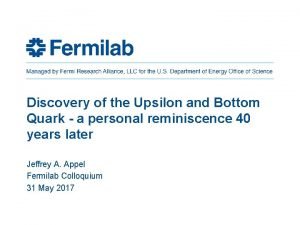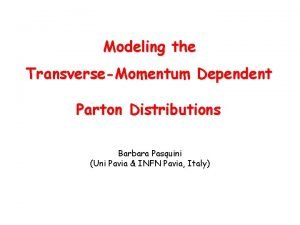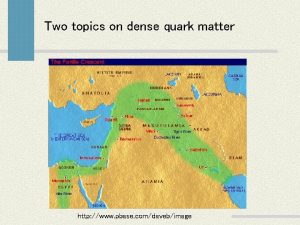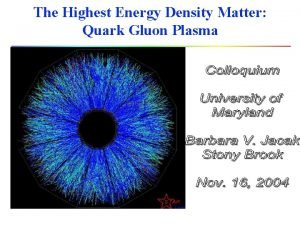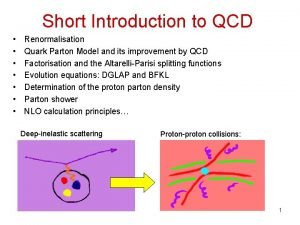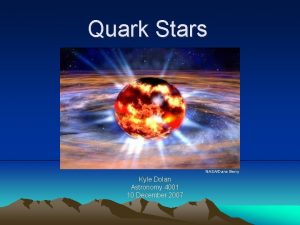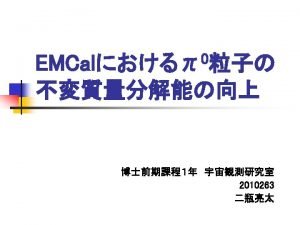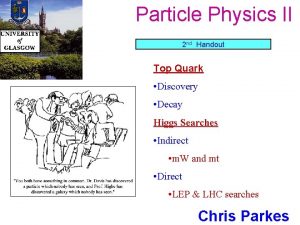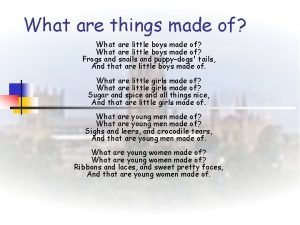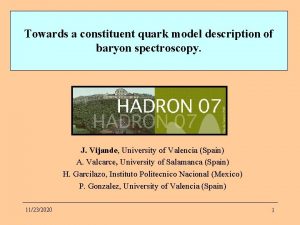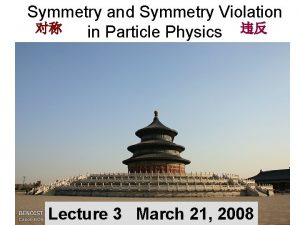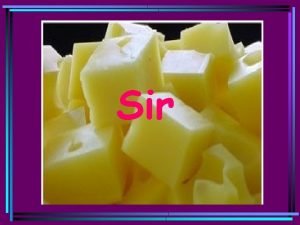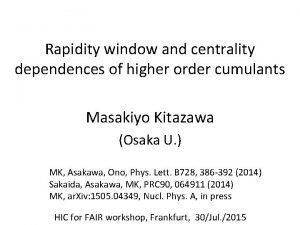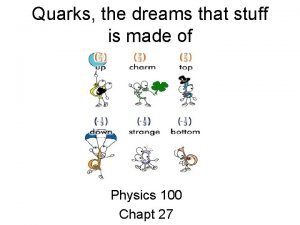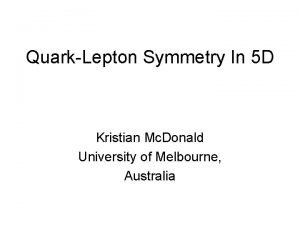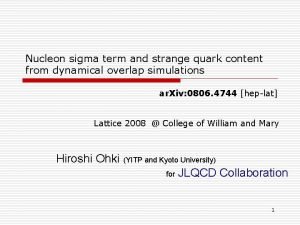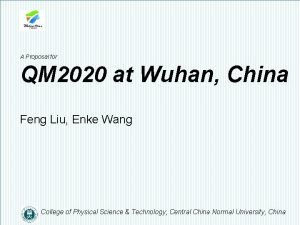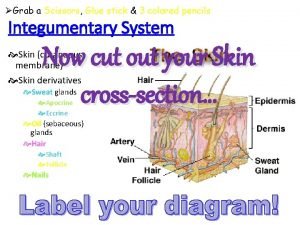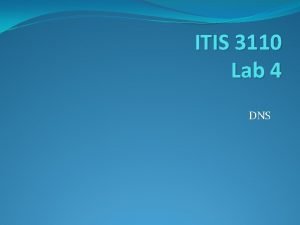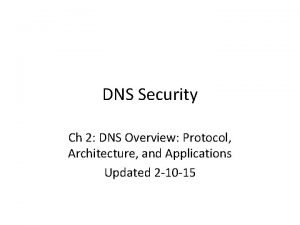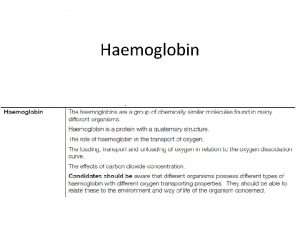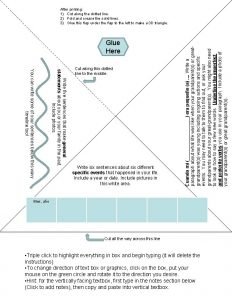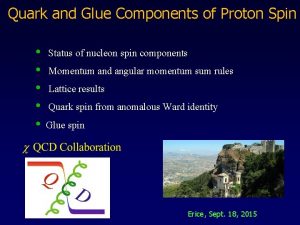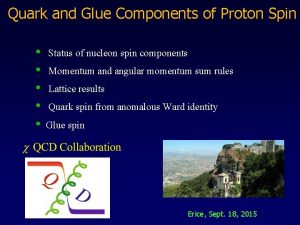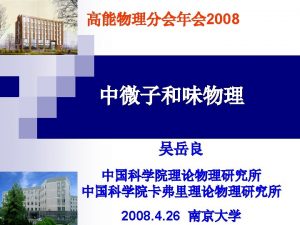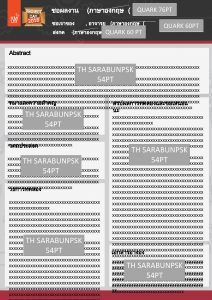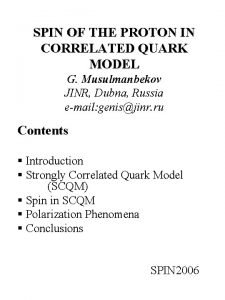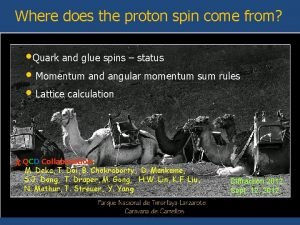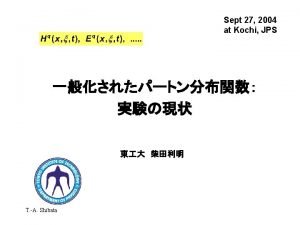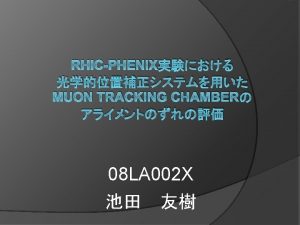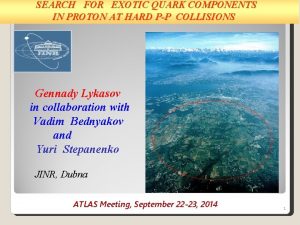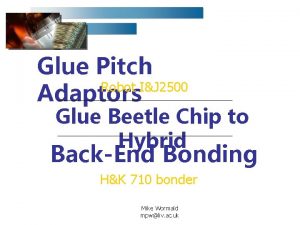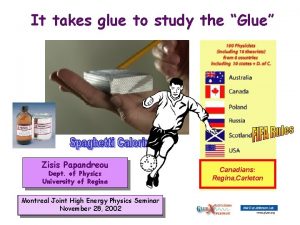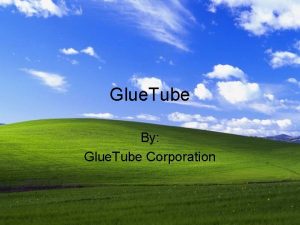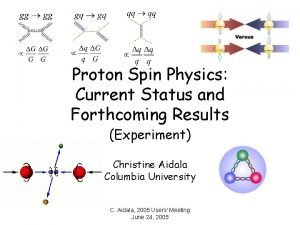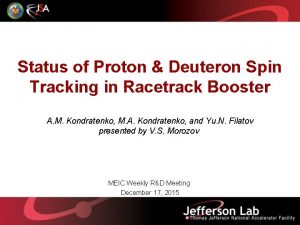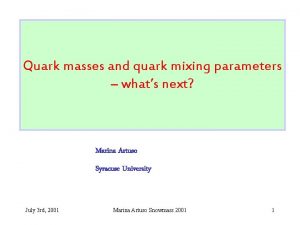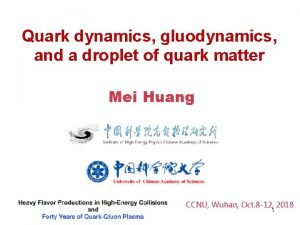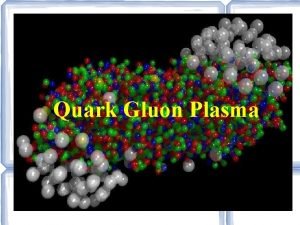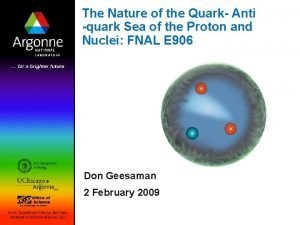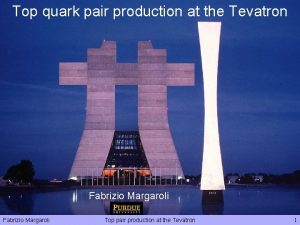Quark and Glue Components of Proton Spin Status



![Glue Helicity ΔG Experimental results from STAR [1404. 5134] PHENIX [1402. 6296] COMPASS [1001. Glue Helicity ΔG Experimental results from STAR [1404. 5134] PHENIX [1402. 6296] COMPASS [1001.](https://slidetodoc.com/presentation_image_h2/873b2eb223e57801bd9bcf76546100be/image-4.jpg)







































- Slides: 43

Quark and Glue Components of Proton Spin • • • Status of nucleon spin components Momentum and angular momentum sum rules Lattice results Quark spin from anomalous Ward identity Glue spin erice-sicily. jpg Erice, Sept. 18, 2015

Where does the spin of the proton come from?

![Glue Helicity ΔG Experimental results from STAR 1404 5134 PHENIX 1402 6296 COMPASS 1001 Glue Helicity ΔG Experimental results from STAR [1404. 5134] PHENIX [1402. 6296] COMPASS [1001.](https://slidetodoc.com/presentation_image_h2/873b2eb223e57801bd9bcf76546100be/image-4.jpg)
Glue Helicity ΔG Experimental results from STAR [1404. 5134] PHENIX [1402. 6296] COMPASS [1001. 4654] ΔG ~ 0. 2 with large error D. de Florian, R. Sassot, M. Stratmann, W. Vogelsang, PRL 113, 012001 (2014)

Quark Orbital Angular Momentum (connected insertion) 5

Status of Proton Spin • Quark spin ΔΣ ~ 20 - 30% of proton spin (DIS, Lattice) • Quark orbital angular momentum? (lattice calculation (LHPC, QCDSF) ~ 0) • Glue spin ~ 0. 4 (STAR, PHENIX, COMPASS) • From `proton spin crisis’ to `missing spin puzzle’. Dark Spin 6

Hadron Structure with Quarks and Glue • Quark and Glue Momentum and Angular Momentum in the Nucleon 7

Momenta and Angular Momenta of Quarks and Glue § Energy momentum tensor operators decomposed in quark and glue parts gauge invariantly --- Xiangdong Ji (1997) § Nucleon form factors § Momentum and Angular Momentum

Renormalization and Quark-Glue Mixing Momentum and Angular Momentum Sum Rules Mixing M. Glatzmaier, KFL ar. Xiv: 1403. 7211 9

Disconnected Insertions of T 1 (q 2) and T 2 (q 2) for u/d Quarks fig_4 a. pdf

Gauge Operators from the Overlap Dirac Operator Overlap operator Index theorem on the lattice (Hasenfratz, Laliena, Niedermayer, Lüscher) Local version (Kikukawa & Yamada, Adams, Fujikawa, Suzuki) Study of topological structure of the vacuum l Sub-dimensional long range order of coherent charges (Horvàth et al; Thacker talk in Lattice 2006) l Negativity of the local topological charge correlator (Horvàth et al)

We obtain the following result where, Liu, Alexandru, Horvath – PLB 659, 773 (2007) Noise estimation with Z 4 noise with color-spin dilution and some dilution in space-time as well.

Glue T 1 (q 2) and T 2 (q 2) M. Deka et al. , PRD (2015), 1312. 4816 Quenched 163 x 24 lattice, β=6. 0, mΠ ≥ 478 Me. V, 500 configurations

Renormalized results: Zq = 1. 05, Zg = 1. 05 CI(u) <x> 0. 416 (40) T 2(0) 0. 283 (112) 0. 704 2 J (118) 0. 91 g. A (11) -0. 21 2 L (16) CI(d) CI(u+d) DI(u/d) 0. 151 0. 567 0. 037 (20) (45) (7) -. 217 0. 061 -0. 002 (80) (22) (2) -. 070 0. 629 0. 035 (82) (51) (7) -0. 30 0. 62 -0. 12 (12) (9) (1) 0. 23 (15) 0. 01 (10) 0. 16 (1) DI(s) Glue 0. 023 0. 334 (6) (56) -. 001 -0. 056 (3) (52) 0. 022 0. 278 (7) (76) -0. 12 (1) 0. 14 (1) 14

Quark Spin, Orbital Angular Momentum, and Gule Angular Momentum (M. Deka et al, 1312. 4816, PRD) pizza cinque stagioni These are quenched results so far.

Chiral effective theory of baryons Little bag model (Brown, Rho) Clouding bag model (Thomas, Theberge, Miller) Chiral quark-soliton model (Wakamatsu) #

Orbital Angular Momentum skyrmion Trinacria, Erice #

Quark Spin Calculation with Axial-vector current • Recent calculation of strange quark spin with dynamical fermions Leader et al. , 1410. 1657 § R. Babich et al. (1012. 0562) § QCDSF (G. Bali et al. 1206. 4205) gives § M. Engelhardt (1210. 0025) § C. Alexandrou et al. (ar. Xiv: 1310. 6339) § A. J. Chambers et al. (ar. Xiv: 1508. 06856) 18

Quark Spin from Anomalous Ward Identify • Calculation of the axial-vector in the DI is not sufficient. • AWI needs to be satisfied. § Overlap fermion --> m. P is RGI (Zm. ZP=1) § Overlap operator for has no multiplicative renormalization. § P is totally dominated by small eigenmodes. § q(x) from overlap is exponentially local and captures the high modes from Aμ 0. § Direct check the origin of `proton spin crisis'. 19

2+1 flavor DWF configurations (RBC-UKQCD) La ~ 4. 5 fm mπ ~ 170 Me. V 32^3 x 64, a =0. 137 fm La ~ 2. 8 fm mπ ~ 330 Me. V 24^3 x 64, a =0. 115 fm La ~ 2. 7 fm mπ ~ 295 Me. V 32^3 x 64, a =0. 085 fm (O(a 2) extrapolation) La ~ 5. 5 fm mπ ~ 140 Me. V 48^3 x 96, a =0. 115 fm La ~ 5. 5 fm mπ ~ 140 Me. V 64^3 x 128, a =0. 085 fm

Connected Insertion from Ward Identity Y. Yang, M. Gong et al 21

Disconnected Insertion for the Charm Quark • Topological term is large and negative • Pseudoscalar term and the topological term cancel page 22

Disconnected Insertion for the Strange and u/d Quarks Strange u/d (DI) page 23

Anomalous Ward Identity in nucleon at finite q 2 • Calculate g. A(q 2), h. A(q 2), g. P(q 2), g. G(q 2) for q 2 from 0. 2 to 1. 1 Ge. V 2 and fit ZA and Zh. A. for the local axial-vector operator • For the 243 x 64 lattice, 1/ZA= 0. 39(3), 1/Zh. A. = 12(6) • This explains why the previous calculation of Δs with axial-vector currents are small. 24

Renormalized Δs Δs = - 0. 068(8) 25

Quark Spin from AWI Overlap fermion on 2+1 flavor 243× 64 DWF lattice (L=2. 8 fm) g. A 0 comp mΠ=330 Me. V (m. V=msea) Δu+Δd (CI) Δc 0. 57(2) ~0 Δs Δu(DI)=Δd(DI) g A 0 -0. 068(8) -0. 09(2) 0. 32(5) The triangle anomaly (topological charge) is responsible for the smallness of quark spin in the proton (`proton spin crisis). 26

Glue Spin and Helicity ΔG • Jaffe and Manohar -- spin sum rule on light cone – Not gauge invariant – Light cone not accessible on the Euclidean lattice. • Manohar – gauge invariant light-cone distribution – After integration of x, the glue helicity operator is – Non-local and on light cone 27

Glue Spin and Helicity ΔG • X. S. Chen, T. Goldman, F. Wang; Wakamatsu; Hatta, etc. Gauge invariant decomposition – Gauge invariant but frame dependent • X. Ji, J. H. Zhang, Y. Zhao; Y. Hatta, X. Ji, Y. Zhao Infinite momentum frame 28

Glue Spin and Helicity ΔG • Large momentum limit – – – Calculate Sg at finite Pz Match to MS-bar scheme at 2 Ge. V Large momentum effective theory to match to IMF • Solution of Aphys -- related to A in Coulomb gauge 29

SG in Coulomb gauge at p 2 = 0 to 1. 24 Ge. V 2 on the 243 x 64 and 323 x 64 lattices Y. Yang ( ), Preliminary SG = 0. 13(3)

Summary and Challenges • Decomposition of proton spin and hadron masses into quark and glue components on the lattice is becoming feasible. Large momentum frame for the proton to calculate glue helicity remians a challenge. • `Proton Spin Crisis’ is likely to be the second example of observable U(1) anomaly. • Continuum limit at physical pion mass and large lattice volume (5. 5 fm) with chiral fermions are being carried out. 31

32

Challenges ahead • Continuum limit and physical pion extrapolations with 3 smaller lattices • 483 x 96 and 603 x 128 lattices with large number of eigenvectors (~ 2000) • Decomposition of glue angular momentum into glue helicity and glue orbital angular momentum 33

T 1 (q 2) and T 2 (q 2) 3 -pt to 2 -pt function ratios Need both polarized and unpolarized nucleon and different kinematics (pi, qj, s) to separate out T 1 (q 2), T 2 (q 2) and T 3 (q 2)

Z 3 grid (64) source with low-mode substitution 323 x 64 lattice, ml (sea)= 0. 004 at mΠ ~ 200 Me. V, 50 conf.

Lattice Parameters • Q u e n c h e d 1 6 3 x 2 4 l a t t i c e wi t h W i l s o n ferm i o n • Q u a r k s p i n a n d < x> w e r e c a l c u l a t e d b e f o r b o t h e C. I. a n d D. I. • κ = 0. 154, 0. 1555 (mπ = 650, 5 3 8 , 4 7 8 M e. V ) • 5 0 0 g a u g e co n fi g u ra t i o n s • 4 0 0 n o i s e s ( O p t i m a l Z 4 n o i s e w i t h u n b i a se d su b t r a c t i o n ) f o r DI • 1 6 n u c l eo n so u rc es 36

Renormalized results: Zq = 1. 05, Zg = 1. 05 CI(u) CI(d) CI(u+d) 0. 416 <x> (40) T 2(0) 0. 283 (112) 2 J DI(u/d) DI(s) Glue 0. 334 (56) -. 056 (52) 0. 151 (20) -. 217 (80) 0. 567 (45) 0. 061 (22) 0. 037 (7) -0. 002 (2) 0. 023 (6) -. 001 (3) 0. 704 -. 070 (118) (82) 0. 629 (51) 0. 035 (7) 0. 022 0. 278 (7) (76) I. Yu. Kobzarev, L. B. Okun, Zh. Eksp. Teor. Fiz. 43, 1904 (1962) [Sov. Phys. JETP 16, 1343 (1963); S. Brodsky et al. NPB 593, 311(2001) → no anomalous gravitomagnetic 37 moment

Momentum fractions <x>q, <x>g Angular Momentum fractions Jq, Jg

Flavor-singlet g. A • Quark spin puzzle (dubbed `proton spin crisis’) – – NRQM – Experimentally (EMC, SMC, … 39

S. J. Dong, J. -F. Lagae, and KFL, PRL 75, 2096 (1995) Lattice 0. 25(12) 1. 20(10) 0. 61(13) 0. 79(11) -. 42(11) -. 12(1) 0. 45(6) 0. 75(11) 0. 60(2) Expt. (SMC) NRQM 0. 22(10) 1 1. 2573(28) 5/3 0. 579(25) 1 0. 80(6) 1. 33 -0. 46(6) -0. 33 -0. 12(4) 0 0. 459(8) 0. 67 0. 798(8) 1 0. 575(16) 0. 67 RQM 0. 75 1. 25 0. 75 1 -0. 25 0 0. 5 0. 75 0. 67 40

Renormalized results: CI(u) CI(d) CI(u+d) 2 J g. A 2 L 0. 704 (118) 0. 91 (11) -0. 21 (16) DI(u/d) DI(s) Glue -. 070 (82) -0. 30 (12) 0. 629 (51) 0. 62 (9) 0. 035 (7) -0. 12 (1) 0. 022 0. 278 (7) (76) -0. 12 (1) 0. 23 (15) 0. 01 (10) 0. 16 (1) 0. 14 (1) 41

Summary of Quenched Lattice Calculations • Complete calculation of momentum fractions of quarks (both valence and sea) and glue have been carried out for a quenched lattice: – Glue momentum fraction is ~ 33%. – g. A 0 ~ 0. 25 in agreement with expt. – Glue angular momentum is ~ 28%. – Quark orbital angular momentum is large for the sea quarks (~ 47%). • These are quenched results so far. 42

Dynamical Fermions Isovector g. A 3 from recent lattice calculations with dynamical fermions Concerns about excited state contamination and volume dependence James Zanotti, Parallel-VIII: S 4 43
 What is a low spin complex
What is a low spin complex Proton proton chain
Proton proton chain Nuclear fission
Nuclear fission Proton proton chain
Proton proton chain Proton spin crisis
Proton spin crisis Proton spin
Proton spin Proton spin
Proton spin Proton spin
Proton spin Proton spin
Proton spin Angular momentum
Angular momentum Proton spin crisis
Proton spin crisis Geminal and vicinal coupling constants
Geminal and vicinal coupling constants Spin spin coupling
Spin spin coupling J coupling constant
J coupling constant Spin down
Spin down Physics wordle
Physics wordle Color quarks
Color quarks Quark names
Quark names Quark model
Quark model Quark gluon
Quark gluon Quark gluon
Quark gluon Quark parton model
Quark parton model Quark astronomy
Quark astronomy Quark gluon
Quark gluon Top quark decay
Top quark decay Quark names
Quark names Constituent quark model
Constituent quark model A charm quark has a charge of approximately
A charm quark has a charge of approximately Dimsi sir
Dimsi sir Quark gluon plasma
Quark gluon plasma 6 types of quarks
6 types of quarks Quark lepton symmetry
Quark lepton symmetry Sigma quark composition
Sigma quark composition Quark matter 2022
Quark matter 2022 The potion contained fruit biscuits and glue
The potion contained fruit biscuits and glue Scissors and glue stick
Scissors and glue stick Glue record dns
Glue record dns What are glue words
What are glue words Glue record dns
Glue record dns What is unary relationship in dbms
What is unary relationship in dbms Aws elb icon
Aws elb icon Clothes iron
Clothes iron Rock paper scissors glue
Rock paper scissors glue Glue sentence for class 1
Glue sentence for class 1
